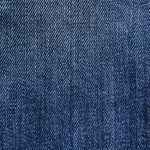You can improve sound quality in any space by installing acoustic scrim fabric, a lightweight, porous material that absorbs and diffuses sound waves to reduce echoes and noise. It’s versatile for walls, ceilings, or partitions and maintains durability over time. Properly cutting, mounting, and tensioning the fabric guarantees peak performance, while routine care keeps it effective. Explore how this fabric’s benefits, installation tips, and customization options can transform your room’s acoustics.
Table of Contents
Key Takeaways
- Acoustic scrim fabric absorbs and diffuses sound waves, reducing echoes and improving overall sound clarity in any space.
- Install scrim fabric on walls or ceilings using smooth surfaces and maintain consistent tension to avoid wrinkles and maximize effectiveness.
- Choose fabric density and weave tightness based on desired sound absorption levels tailored to your room’s acoustics.
- Regularly clean scrim fabric gently with a soft brush or vacuum to maintain its sound-absorbing performance over time.
- Customize scrim fabric color and size to blend with room décor while enhancing sound quality efficiently and cost-effectively.
What Is Acoustic Scrim Fabric?
Acoustic scrim fabric is a lightweight, porous material designed to manage sound by allowing it to pass through while reducing echoes and noise. When you use it, you’re adding a layer that softens the sound reflections in your space without fully blocking the sound.
It’s often made from woven fibers that create tiny air pockets, helping to absorb and diffuse sound waves gently. You’ll find acoustic scrim fabric in theaters, recording studios, and conference rooms because it improves sound clarity without altering the room’s appearance dramatically.
It’s flexible and easy to install, making it ideal for covering walls, ceilings, or speaker enclosures. By choosing this fabric, you’re effectively controlling unwanted noise and enhancing the overall acoustic environment around you.
How Acoustic Scrim Fabric Works
To understand how acoustic scrim fabric works, you need to look at how its porous structure interacts with sound waves. When sound waves hit the fabric, the tiny openings let the waves pass through but disrupt their energy. This disruption converts sound energy into a small amount of heat, reducing echoes and reverberation.
The fabric doesn’t block sound entirely; instead, it absorbs specific frequencies, improving overall acoustics. You’ll find that its lightweight, breathable design allows it to be used in various settings without adding bulk.
Benefits of Using Acoustic Scrim Fabric
You’ll find that acoustic scrim fabric offers excellent sound absorption efficiency, helping to cut down on unwanted noise.
It’s great for reducing echo and improving overall sound quality in your space.
Plus, its versatility means you can use it in a variety of settings to meet your specific noise control needs.
Sound Absorption Efficiency
When you want to reduce unwanted noise and improve sound quality, scrim fabric offers impressive sound absorption efficiency.
It works by trapping sound waves and minimizing reflections, creating a clearer and more pleasant acoustic environment. Using acoustic scrim fabric can greatly enhance spaces where sound clarity matters.
Here’s why its sound absorption efficiency stands out:
- Porous structure captures a wide range of frequencies.
- Lightweight design won’t add bulk to your space.
- Flexible installation options for walls, ceilings, or partitions.
- Durable materials maintain performance over time.
Noise Reduction Advantages
Although many materials claim to reduce noise, acoustic scrim fabric delivers noticeable results by effectively dampening sound transmission.
When you use this fabric, you’ll experience a significant drop in echo and background noise, making conversations clearer. It helps block unwanted sounds from entering or leaving a room, which is especially useful in busy environments or shared spaces.
You’ll also find it reduces sound reflections, improving overall acoustics without bulky installations. Because it’s lightweight and flexible, you can apply it easily to walls, ceilings, or partitions.
Versatile Application Benefits
Beyond its impressive noise reduction capabilities, acoustic scrim fabric offers a range of versatile application benefits that make it an ideal choice for various settings.
You’ll find it easy to integrate into different environments thanks to its flexibility and durability. Whether you’re working in commercial, residential, or industrial spaces, this fabric adapts seamlessly to your needs.
Here’s why you should consider using it:
- Lightweight and easy to install, saving you time and effort
- Durable material that withstands wear and tear over time
- Visually adaptable, blending well with different interior designs
- Moisture-resistant, suitable for humid or damp conditions
With these benefits, acoustic scrim fabric helps you enhance sound quality while fitting effortlessly into your space.
Ideal Spaces for Acoustic Scrim Fabric
Because acoustic scrim fabric effectively controls sound reflections, it fits perfectly in spaces where clear audio matters most.
Acoustic scrim fabric excels in managing sound reflections, ideal for any space where clear audio is crucial.
You’ll find it ideal in home theaters, where crisp dialogue and immersive sound enhance your viewing experience. It’s also great in recording studios, helping you capture clean audio without unwanted echoes.
If you run a conference room, acoustic scrim fabric guarantees every participant hears clearly, improving communication.
Educational settings like classrooms and lecture halls benefit too, as it reduces noise distractions and supports better concentration.
Even open office environments gain from its sound-absorbing qualities, creating a quieter, more productive workspace.
Wherever controlling sound is essential, acoustic scrim fabric offers a practical, unobtrusive solution that blends seamlessly into your space.
Comparing Acoustic Scrim to Other Soundproofing Materials
When you’re choosing materials to manage sound, understanding how acoustic scrim compares to traditional soundproofing options can help you make the best decision for your space.
Acoustic scrim is lightweight and flexible, unlike dense foam or heavy panels. It excels at controlling mid to high frequencies, whereas materials like mass-loaded vinyl block sound by adding mass.
Acoustic scrim also offers breathability, making it suitable for temporary setups.
Here’s how acoustic scrim stacks up:
- More versatile and portable than rigid foam panels
- Less effective at blocking low-frequency bass than dense barriers
- Easier to layer with other fabrics for customized sound control
- Often more cost-effective than specialized acoustic tiles
Knowing these differences lets you tailor your soundproofing to your specific needs.
Installation Tips for Acoustic Scrim Fabric
To install acoustic scrim fabric effectively, start by measuring and cutting it accurately to fit your space.
You’ll want to use the right mounting techniques to keep it secure without damaging the material.
Finally, pay close attention to handling seams and edges to guarantee a clean, professional finish.
Measuring and Cutting
Although measuring and cutting acoustic scrim fabric requires careful attention, following a few key steps will help you achieve a perfect fit.
Start by accurately measuring the area where you’ll install the fabric, accounting for any seams or overlaps. Use a sharp fabric scissors or rotary cutter to guarantee clean edges and avoid fraying. Always cut on a flat surface and mark your measurements with a fabric-safe pencil or chalk for precision. Remember to add a small allowance for hemming or securing edges.
- Double-check measurements before cutting to prevent mistakes
- Cut slowly and steadily to maintain fabric integrity
- Keep excess fabric nearby for adjustments
- Store scraps for patching or future use
This approach guarantees a neat, effective installation.
Mounting Techniques
Once you’ve measured and cut your acoustic scrim fabric accurately, mounting it properly guarantees it performs as intended.
Start by selecting a smooth, clean surface to avoid wrinkles or sagging. Use staples or small nails along the edges, spacing them evenly to keep the fabric taut without overstretching.
If you’re attaching it to a frame, wrap the fabric around and secure it on the backside for a neat finish. For walls or ceilings, consider using adhesive sprays or hook-and-loop strips for a less permanent option.
Avoid sharp fasteners that might damage the fabric or reduce its acoustic properties. Always check tension as you go—tight enough to stay flat, but not so tight that it distorts the material’s weave or texture.
Seam and Edge Handling
Handling seams and edges carefully guarantees your acoustic scrim fabric maintains both its appearance and effectiveness.
When you join fabric panels, neat seams prevent gaps that diminish sound absorption. Secure edges stop fraying, preserving durability and a clean look.
Use these tips to assure flawless seam and edge handling:
- Align fabric patterns or weaves precisely before stitching or taping.
- Employ double-sided fabric tape or industrial adhesive to reinforce seams discreetly.
- Fold edges under and hem them if possible to prevent unraveling.
- Use tension clamps or frames to keep edges taut, avoiding sagging or wrinkles.
Maintenance and Care of Acoustic Scrim Fabric
Because acoustic scrim fabric plays an essential role in sound management, you’ll want to maintain it properly to guarantee its effectiveness and longevity.
Regularly dust the fabric using a soft brush or vacuum with a brush attachment to prevent dirt buildup, which can reduce sound absorption. If you spot stains, gently clean with a mild detergent and warm water, avoiding harsh chemicals that might damage the fibers. Always test any cleaning solution on a small, hidden area first.
Avoid excessive moisture, as it can warp or weaken the fabric. When not in use, store the scrim fabric in a cool, dry place, rolled or folded carefully to prevent creases.
Customization Options and Design Considerations
Maintaining your acoustic scrim fabric well guarantees it stays effective, but tailoring it to your specific needs can make it even better. You can customize your scrim to match the room’s aesthetics and acoustic demands.
Consider the following to optimize your setup:
- Fabric density and weave tightness, which affect sound absorption levels.
- Color and pattern options to blend or stand out in your space.
- Size and shape adaptations for unique room dimensions or architectural features.
- Integration with lighting or other design elements to enhance both function and style.
Cost Factors and Budgeting for Acoustic Scrim Fabric
When planning your acoustic scrim fabric project, understanding the cost factors upfront helps you stay within budget and avoid surprises. Your total expense depends on fabric type, size, installation complexity, and any customization. Keep in mind, higher quality materials and intricate designs typically cost more but deliver better performance.
| Cost Factor | Budget Tip |
|---|---|
| Fabric Type | Choose based on acoustic needs and price |
| Size & Coverage | Measure accurately to avoid waste |
| Customization | Limit to essential features |
| Installation | Consider DIY for simple setups |
| Shipping & Taxes | Factor in additional fees early |
Frequently Asked Questions
Can Acoustic Scrim Fabric Be Used Outdoors?
You can use acoustic scrim fabric outdoors, but you’ll need weather-resistant options to handle moisture and UV exposure. Make sure it’s designed for outdoor use to maintain sound quality and durability in varying conditions.
Is Acoustic Scrim Fabric Fire-Resistant?
You’ll find that acoustic scrim fabric often wears a fire-resistant cloak, shielding spaces like a vigilant guardian. But don’t assume all types do; always check specific ratings before trusting it to withstand flames.
How Long Does Acoustic Scrim Fabric Typically Last?
You can expect acoustic scrim fabric to last around 5 to 10 years, depending on usage and environment. If you keep it clean and avoid harsh conditions, it’ll maintain its performance for quite a while.
Can Acoustic Scrim Fabric Be Recycled?
You can recycle some acoustic scrim fabrics, but it depends on the material composition. Check with local recycling programs or manufacturers for specific guidelines, since synthetic blends might be harder to process than natural fibers.
Does Acoustic Scrim Fabric Affect Room Aesthetics?
You’ll think your room just got a stunning makeover! Acoustic scrim fabric not only tames noise but also adds sleek, stylish vibes. It blends seamlessly, boosting aesthetics without sacrificing design flair or functionality.







